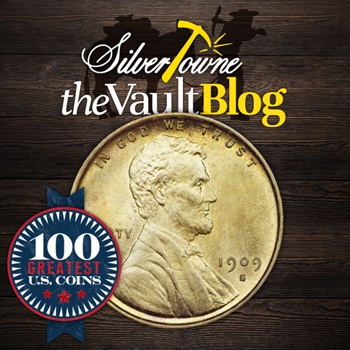
Lincoln cents are one of the most collected coins in the numismatic hobby. Millions of people flock to them in large part because of their affordability. However, there are those key date Lincoln cents that far exceed the hands of those who collect your common dates. In fact, the value in those key dates increases by the thousands, but what is THE key date?
It is no surprise that the mention of the 1909 V.D.B. Lincoln penny has frequented the airwaves around you if you are a true collector in the hobby. The initials themselves, matched with the man and designer they call Victor David Brenner, are more highly collectible than most pennies out there. But it is even more so collectible, and pricey for that matter, if the 1909 is followed by an “S” that represents the San Francisco Mint.
A part of the top 100 Greatest United States Coins as put together in the fourth edition of the Whitman Publication by author Jeff Garrett with help from Ron Guth, the 1909-S V.D.B. Lincoln cent is a dream coin among collectors. With influence from the top dealers across the country, we will take a look at where the rare coin lands on the list and why.
#23 - 1909-S V.D.B. Lincoln Cent
With a mintage like 484,000, many could assume that the number seems high in relation to other rare and scarce coins like it out there. However, as mentioned before, millions of people collect the Lincoln cent which makes for more demand than there is supply of this nearly half a million minted coin. But how did this specific coin become so popular and who is the man behind the initials V.D.B.?
Victor David Brenner - V.D.B.
Born Viktoras Baranauskas in Siauliai, Lithuania, on June 12, 1871, Victor David Brenner was taught at a young age by his father the skills for gem and seal engraving. He was also taught sculpting and by 1890 at the young age of just 19, Brenner moved to the United States of America and lived in New York City. This was also why he changed his birth name as it was thought easier to gain access to the States this way.
After moving to America and living on the skills taught to him at a young age by his father, Brenner also made it a point to learn English while taking courses at the Cooper Union. He also learned French later on as it would prove to be helpful for him years later when after living in the U.S. for eight years, he decided to move to Paris and continue his education in the field of arts and medals. He studied at the Academie Julian School of Art under instructor Oscar Roty, a highly celebrated medalist in his own right in the Art Nouveau period. The academy is where he finely tuned and crafted his skills as he became more and more experienced. He would eventually go on to win awards during the 1900 Paris Exposition which garnered attention and built his reputation. From there, he moved back to America where his name alone had no problem finding work and furthering his career.
The Design
The early-1900s saw a lot of changes in coin design in large part to President Theodore Roosevelt. The President had commissioned the famous United States sculptor Augustus Saint-Gaudens to redesign all the denominations in United States coinage, including the one-cent coin. Saint-Gauden’s early design featured something similar to James Barton Longacre’s flying eagle that was found on the coin from 1856-1858 but was then abandoned in favor of a design that featured a head of Victory wearing an Indian headdress. Saint-Gaudens, however, died before the design was finalized.
This lead to the design to be done by Brenner as his famous work in 1907 portraying the late President Abraham Lincoln was met with great support from Roosevelt. The produced bust of Abraham Lincoln and the need for a new and different design on the one-cent was what finally authorized the design to be produced in 1909. While most familiar with us today, the image of Lincoln on the design was incredibly new back in 1909 as the image of an actual person on a coin meant for circulation had never been done before.
More than that though is the unusual placing of initials on the bottom of the reverse of the coin. The public was not happy with the choice and in turn, caused the Mint to remove them later on in the first year of its release. This allowed for four different varieties that year: the 1909 Lincoln cent with and without the V.D.B. and the 1909-S with and without the V.D.B. However, the 1909-S V.D.B. is the rarest of the four varieties and is probably one of the most counterfeited issues from the series.
In 1960, the 1909-S with initials was valued at $150 in Choice Uncirculated condition. Twenty years later, it had risen to $750. In today’s fourth edition, that same condition is valued at $2,750.







